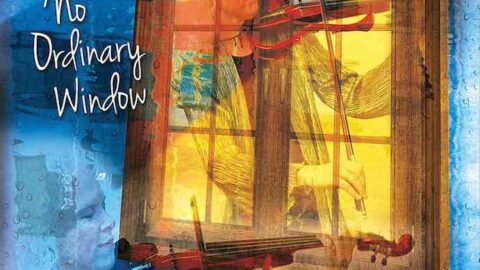Martha Mooke’s No Ordinary Window on Monkmusic Records is an amazing look into what is possible with one musician and a few pieces of technology, yet it is also a display of an amazing living composer and performer with an imaginative ear. Mooke’s compositional craft permeates throughout this album, and the musical worlds she creates are purely authentic. Her compositional style is only matched by her viola performance chops as she is the sole performer on each piece.
The title track No Ordinary Window is just that, a unique window through which Mooke lets the listener view her electro-acoustic landscape. This piece is beautiful and well put together. Rather than make the viola’s electronic effects and altered timbres the main idea, there is a tonal theme that permeates throughout the piece. This theme is not only developed in the traditional way, but also through different effects pedals. In many ways, it is symphonic and grand, but still intimate and fragile in some sections. It is amazing how Mooke has found certain effects and lines that layer in the ways they do. Also, the way in which she performs makes each musical idea seem natural and easy.
Virtual Corridors is a piece that is much more frantic and quite dramatic in certain sections. It is a work that could easily fit into a movie soundtrack adding tension while still propelling the action forward. The pizzicato line that starts the piece acts as its engine, and the bowed line put through heavy distortion sets the tense tone from the start. Even through the distortion and electronic timbral effects, Mooke still evokes a human sentimentality through her playing. There is a connection to the excitement as the listener is taken for a ride.
The opening of Future Prayer sounds like a combination of large church bells and a gamelan ensemble, making it hard to believe that a 5-string viola is making all of these aural effects. This comes back to bookend the piece, but with a more unique and haunting string sound. The sounds evoke an indistinct place of worship. The col legno bowing that comes in quickly, disturbs the calm, serene setting, and from there, the piece is almost a constant battle between the calm ostinato layer and the high viola line coupled with sweeping electronic effects.
In ICE 4, Mooke views ice in a variety of different ways including its use as an acronym for “In Case of Emergency.” Sparse pizzicato notes and a digital delay help to set a very frozen scene, but as the music builds and becomes more intense, the emergency starts to show itself. A quick bowed ostinato line starts to push the music forward, but the climax is built more on rhythmic intensity and pitch rather than dynamics. The piece ends much like it began, striping away any warmth the climax provided. It conveys the image of being trapped in a maze of ice, futilely trying to escape.

The final track on the album, A Dream in Sound, is “a sonic representation of the dream state,” according to the album notes. It is also the part of the album where the listener may forget that they are listening to a single viola player. A few of the different timbres of the viola are more akin to an electric guitar and a Native American flute. The piece seems to borrow stylistic ideas not only from Rock but from Jazz and Latin styles, as well. The work is formally complex, too, demanding many different character changes from the performer, which Mooke makes sound effortless.
No Ordinary Window is a beautiful example of the doors technology can open for acoustic instruments. Each track on this album is haunting, yet beautiful; alien, yet human. Throughout it all, Martha Mooke still remains true to excellent compositional craft which makes this album all the more impressive. No Ordinary Window is truly engaging, from top to bottom.
























